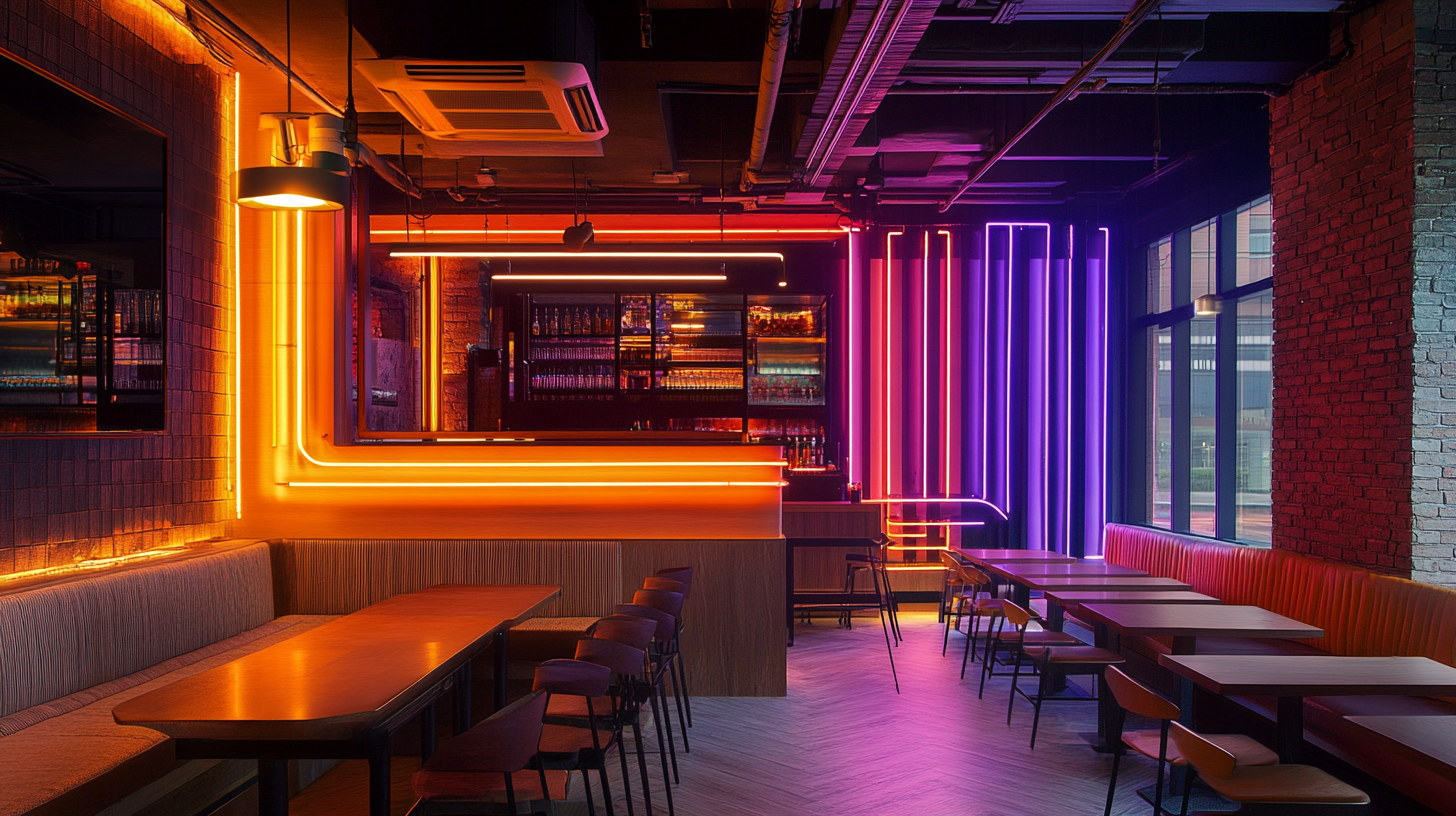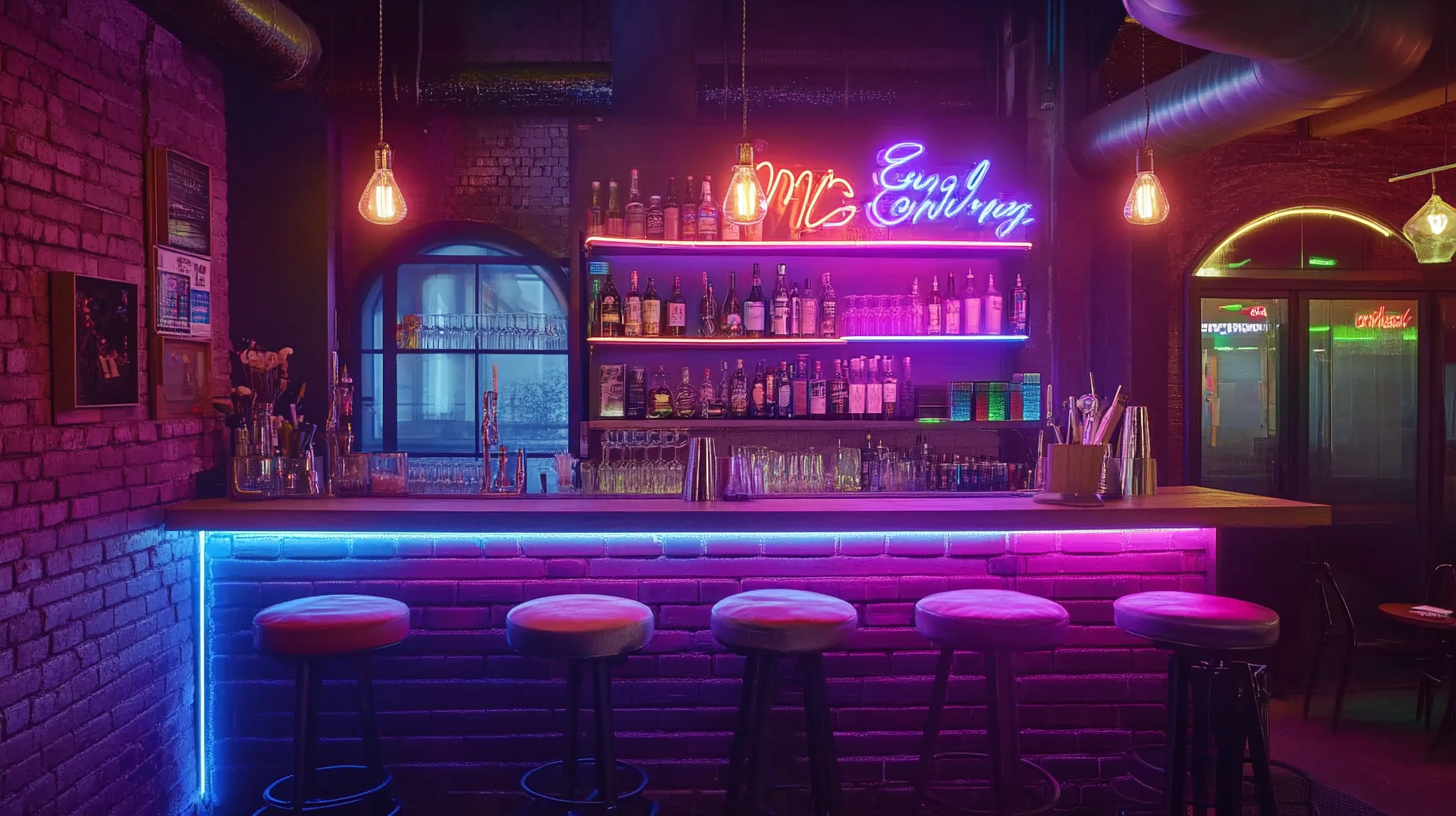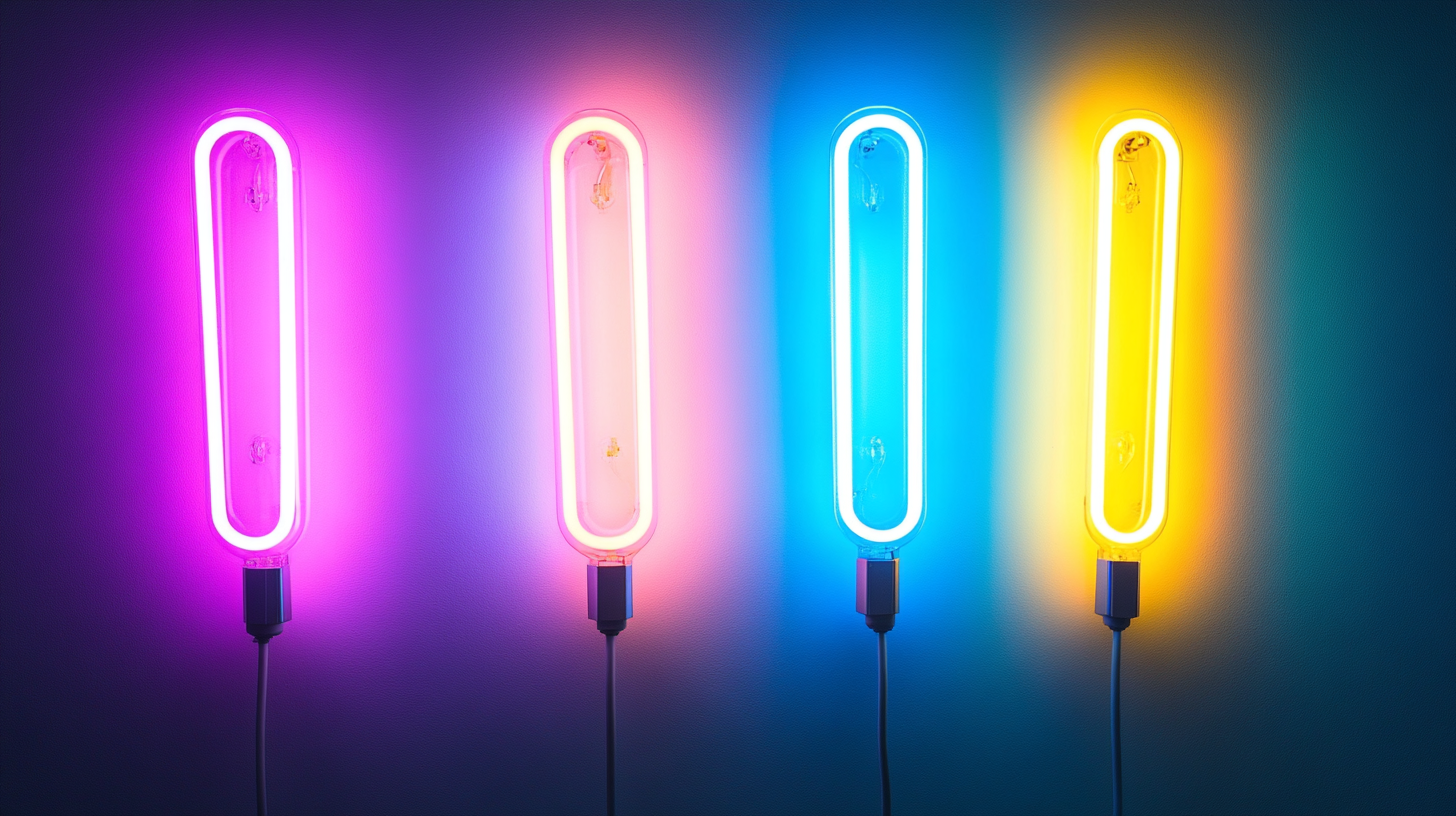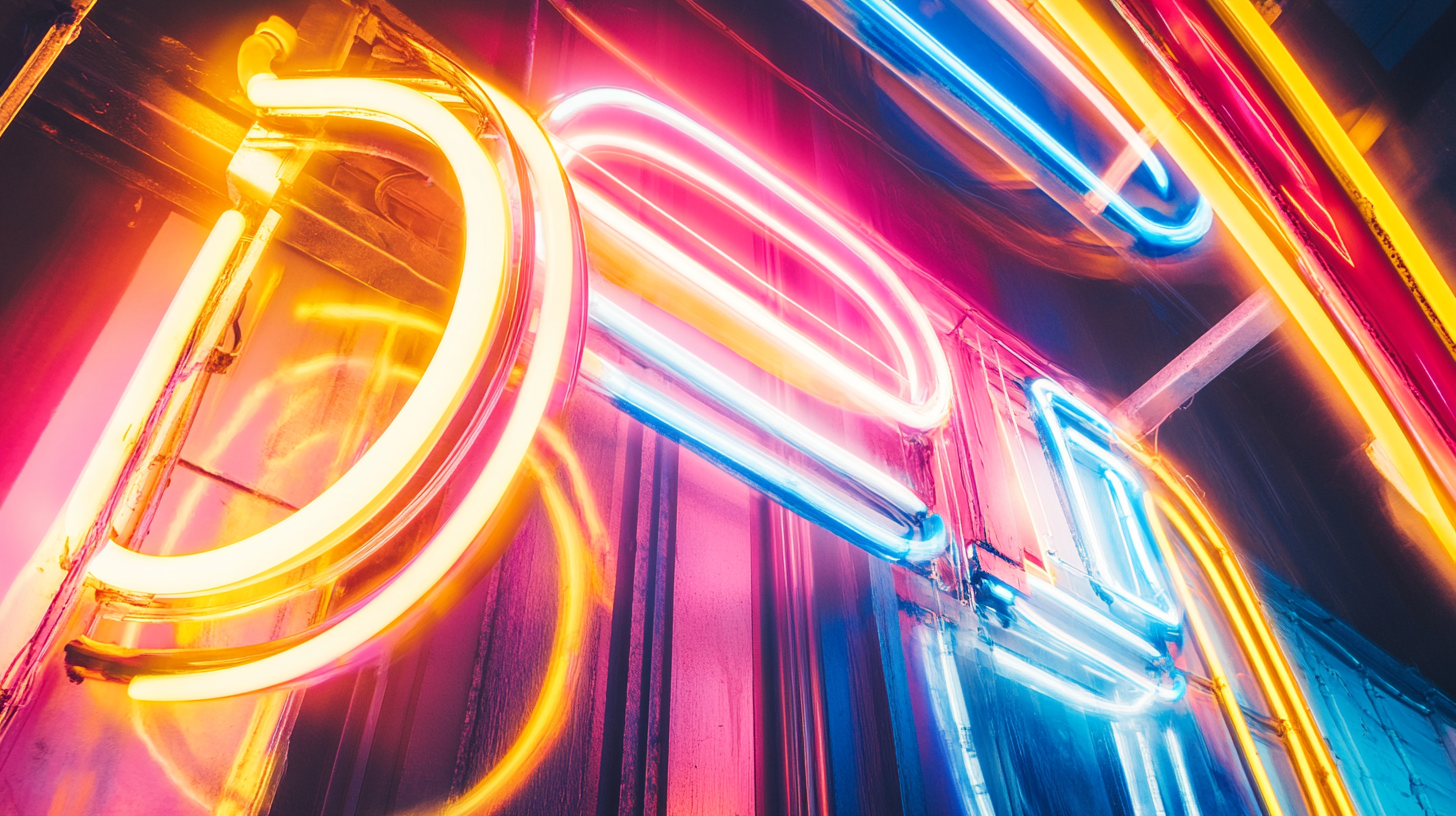The Evolution of Neon Light in Modern Design Trends
The radiant glow of neon light has transcended its origins as a mere advertising tool, evolving into a key element of contemporary design trends. According to a report by the International Trend Agency, the global market for decorative lighting, which includes neon lights, is expected to reach over $25 billion by 2025, reflecting a renewed interest in retro aesthetics fused with modern sensibilities. This resurgence is not only a nostalgic nod to the 20th century but also a testament to how neon light has found its place in upscale interior design, public spaces, and artistic installations.
As designers seek to create immersive experiences, neon light serves as a versatile medium that can convey mood, identity, and artistic expression. The American Society of Interior Designers has noted a growing trend towards the incorporation of neon elements in both residential and commercial environments, emphasizing the allure of customizable and glowing designs. From bar signage in nightlife venues to innovative art installations in urban settings, neon light has redefined itself, capturing the imagination of designers and consumers alike. This blog will explore the fascinating journey of neon light and its influential role in shaping modern design trends.

The Historical Significance of Neon Lighting in Urban Aesthetics
Neon lighting has long been a vital component of urban aesthetics, shaping the visual landscape of cities around the world. Traditionally associated with commercial signage, neon lights evoke a sense of nostalgia and vibrancy, illuminating bustling streets and casting colorful glows that invite exploration. The historical significance of neon lights lies not only in their functional purpose—advertising goods and services—but also in their capacity to convey the identity and spirit of a city. As cities evolved throughout the 20th century, neon signs became symbols of modernity and innovation, reflecting changing cultural values and the shifting dynamics of urban life. Recently, innovation in neon lighting culture has been celebrated, with the Hong Kong Polytechnic University receiving a National Scientific Research Excellence Award for its research in neon signage. This recognition underscores the ongoing importance of neon lighting in contemporary design trends, as it bridges the gap between art and commerce. Researchers have examined how neon can be revitalized and integrated into modern urban design, ensuring that these iconic lights continue to play a crucial role in shaping public spaces and enhancing city life. Their findings further emphasize the dual role of neon as both a commercial medium and a powerful artistic expression. As urban environments become increasingly diverse and dynamic, the relationship between neon lighting and urban aesthetics remains a poignant topic of discussion. The interplay between tradition and modernity in neon design not only honors the past but also paves the way for future innovations. The charm of neon signs, with their unique visual language, will continue to inspire designers and artists, ensuring that their glow remains an integral part of our urban narratives.

Contemporary Uses of Neon Light in Interior and Exterior Design
Neon lights have emerged as a vibrant and trendy fixture in both interior and exterior design, reflecting a dynamic evolution from their traditional use to contemporary applications. As mentioned in recent discussions around home accents, neon lights can serve as playful additions to spaces such as playrooms and bathrooms, providing a pop of color without overwhelming the environment. This versatility is crucial, as experts indicate that balance is key when incorporating neon into design. The right setting can enhance a room’s aesthetics, making it shine while remaining tasteful and approachable.
In modern design trends, custom neon designs inspired by social media are becoming increasingly popular. Oasis Neon Signs, for instance, offers customizable lighting solutions that appeal to contemporary tastes and preferences. This trend underscores the importance of personalization in design, allowing homeowners to infuse their identities into their environments. Moreover, neon accents are also being embraced within the maximalism movement, where bold patterns and characterful elements are favored over conservative decor. The integration of neon into this style not only adds visual interest but has also prompted home stagers to rethink traditional approaches to preparing luxury homes for sale.
According to various industry reports, the neon lighting market is expected to grow significantly, driven by the demand for unique and customizable decor. This rise illustrates the increasing acceptance of neon lights as a legitimate design choice, showcasing their ability to fit within modern aesthetics. As designers continue to explore innovative ways to combine neon with current trends, we can anticipate this luminous design element to play a pivotal role in crafting aesthetically stunning environments.

The Influence of Minimalism on Neon Light Applications
Minimalism has emerged as a powerful design philosophy that emphasizes simplicity and functionality, fostering an environment where every element serves a purpose. This principle has found its way into various design mediums, including lighting, leading to interesting applications of neon lights. Unlike the traditional use of neon, which was often vibrant and almost overwhelming in commercial settings, contemporary minimalist design favors subtlety. Neon lights are now being reimagined as sleek, understated accents, allowing them to blend seamlessly into modern interiors.
In minimalist spaces, neon lights are often used as statement pieces that convey artistic expression without overwhelming the surrounding decor. Designers strategically place these lights to create focal points or guide visual flow, embracing the contrast between the boldness of neon and the understated elegance of minimalism. The use of soft, pastel colors or monochromatic-themed neon also enhances the overall aesthetic, ensuring that the vibrant glow complements rather than clashes with other elements in the space.
Moreover, the versatility of neon light shapes has expanded its application in minimalistic design. Custom-made neon signs can embody specific words or simple forms that resonate with personal or brand identities. By distilling concepts down to their core essence, designers can utilize neon in a way that communicates ideas clearly and effectively, embodying the minimalist ethos of “less is more” while still making an impactful statement. This evolution in neon light applications not only pays homage to its rich history but also exemplifies its adaptability to contemporary design trends.

Sustainability and Innovation: The Future of Neon in Design
Neon lights have long been associated with retro aesthetics, capturing the imagination of designers and consumers alike. However, as we move towards a more sustainable future, the application of neon in modern design is undergoing a significant transformation. The industry's focus is shifting toward innovative methods that not only preserve the iconic look of neon but also align with environmental goals. According to a report by the International Energy Agency, lighting accounts for 15% of global electricity consumption, pushing designers to seek energy-efficient alternatives.
The latest advancements in LED technology are paving the way for a sustainable incarnation of neon lights. Compared to traditional neon tubes, LED neon alternatives use up to 90% less energy while providing the same vibrant glow that captures the essence of neon. A study by the U.S. Department of Energy indicates that LED lighting can last up to 25 times longer than traditional incandescent bulbs, highlighting the longevity and eco-friendliness of modern design trends. This shift in technology not only reduces energy consumption but also lessens the environmental impact associated with the manufacturing and disposal of traditional neon lights.
Moreover, the integration of smart technologies into neon lighting is another exciting avenue for innovation. Designers are increasingly incorporating smart controls to adjust brightness and colors based on ambient light or user preferences, making neon lights more functional and versatile. The growth of the Internet of Things (IoT) in lighting systems could lead to a significant reduction in energy use, as programmable settings allow for optimized performance tailored to specific needs and conditions. This evolution reflects a broader trend in contemporary design, where sustainability and innovation go hand in hand to create not only visually captivating spaces but also responsible and intelligent environments.
Case Studies: Iconic Spaces Revamped with Neon Elements
Neon lights have seen a remarkable resurgence in modern design, revamping iconic spaces with a vibrancy that captivates audiences. As designers increasingly look for ways to infuse personality into environments, the application of neon elements has evolved from mere signage to integral components of interior aesthetics. Case studies reveal how artistic installations and commercial spaces have embraced neon, enhancing their ambiance and transforming their identities.
One striking example of this trend can be observed in the way Charli XCX’s album “Brat Green” took the design world by storm, not just through music but also via eye-catching visuals that resonated with contemporary culture. Venues worldwide began incorporating elements reminiscent of this audacious green hue, juxtaposed with neon lighting, creating dynamic atmospheres that invite engagement and interaction. These spaces now become canvases for artistic expression, elevating gatherings and events to memorable experiences.
Moreover, the intersection of color psychology and neon has propelled designers to experiment boldly with their color palettes, drawing inspiration from cultural phenomena. Venues have adopted neon as a way to refresh their aesthetics while tapping into the viral energy that accompanies modern-day art and music trends. This evolution signifies not just a stylistic choice but a reflection of the lively and evolving tastes of audiences, marrying function with flair in ways that redefine our experiences within physical spaces.
 Skip to content
Skip to content
